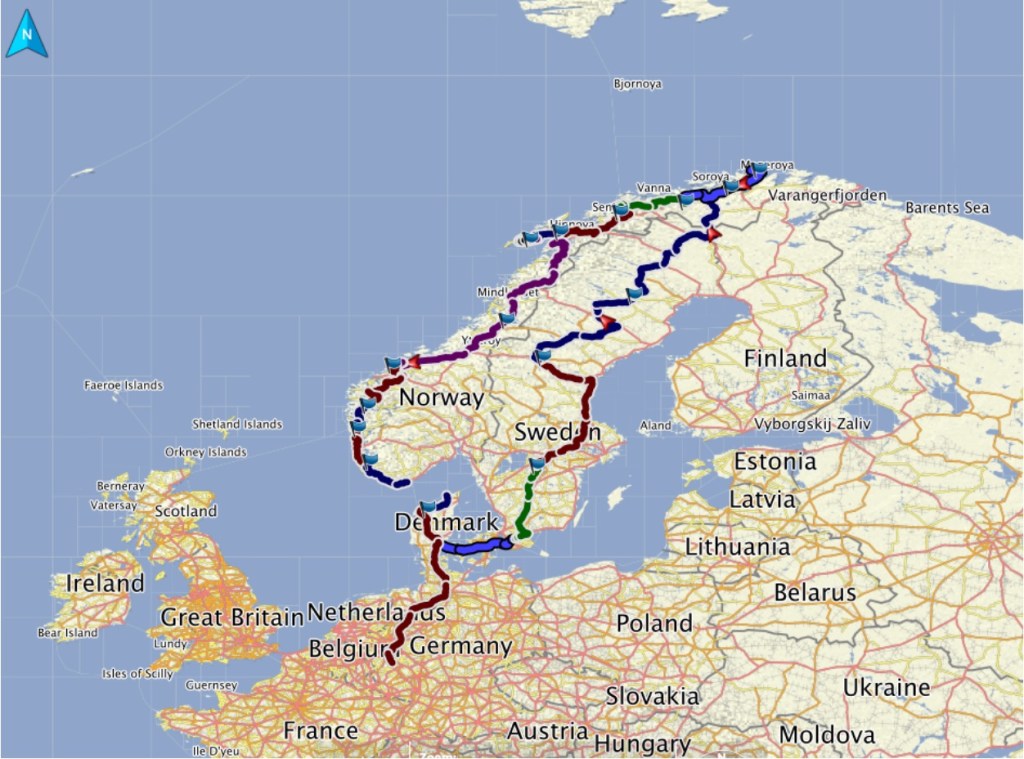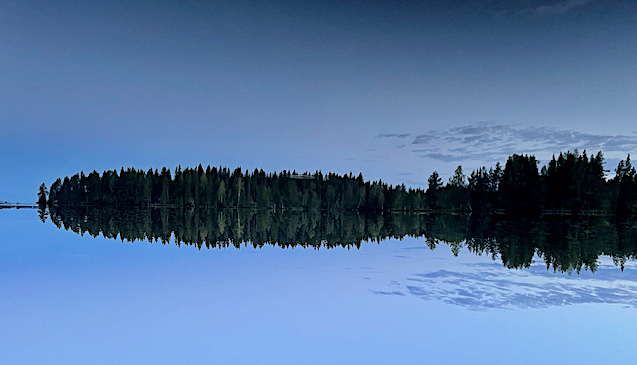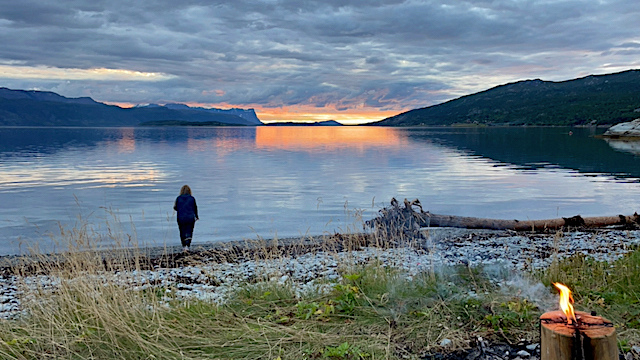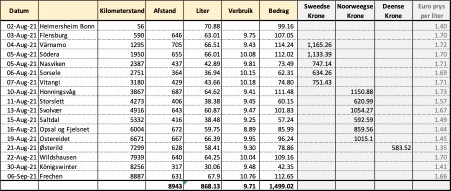To the real north, and back
I did find it rather funny. I know as a South African in Germany I don’t have a full understanding of history, geology, culture, past conflict, and context, but as we drove into Schleswig-Holstein, the Bundesland signage next to the road seemed a little near sighted, pun intended. ‘Schleswig-Holstein – der echte norden’ it said. Garmin profusely disagreed with a thick pink highlighted line and distance to destination clearly stating I had at least 2830km further to go to my ‘echte norden’ destination; The Nordkapp in Norway. I was wise enough not to be disappointed that I have ‘reached my destination’, and that I’ll have to stop enjoying a road-trip in my brand new LenieBus.
In German they refer to it as a ‘Kastenwagen’. In English we can therefor probably call it a Box Van, or maybe a Box Wagon, Panel Van, or Box Truck. If this was the 70s, maybe Passion Wagon or something similar that rhymes with truck. Whatever it’s called, it’s a midsized RV (Recreational Vehicle/motorhome) which puts us straight into the popular culture of van-life. LenieBus is our most recent travel equipment upgrade.




Heleen and I started our camping life and trips with borrowed tents, cooler boxes, sometimes Ventertjies (South African brand trailers), and flat cars such as VW Golf, VW Jetta or similar. It was fun and simple and allowed us to see many places. However, in South Africa, there are so much more to see and experience if you have off-road and dirt road capability, and thus we upgraded in 1998 to a VW Syncro Bus, but still sleeping in pitched tents and on the floor using blow-up mattresses. By then, we have become a family of four and in 2003 we upgraded to 4×4 ‘bakkies’ (pick-up trucks) when I bought my Echo 3 Off-road trailer with rooftop tent and my first Ford Ranger bakkie. We were kitted out and conquered every inch of dirt road, from ‘Kaap’ to Kalahari, Kruger to Molopo, Mapungubwe to Keimouth and ventured into the fantastic neighbouring countries like Swaziland, Botswana and Namibia.
We now live in Germany, and camping and road-tripping is slightly different than in the ‘platteland’ (rural) areas of South Africa. For starters, you really must go far and wide, and with a pinch of luck, to find a dirt road. Off the beaten tracks are however plentiful and within mainland Europe you can cover decent distance when you’re in the mood.
I was in the mood.
‘Let’s head north’ said Heleen.
‘Okay, but let’s go all the way north’, I replied.
Our great Nordkapp road-trip was now reality. Nordkapp is Europe’s most northern point. After all kinds of delays with the delivery of LenieBus, we eventually received her keys and the go-ahead that she is now ours from Herr Dahlem at 15:00 on 2 August. We loaded stuff for a three-week trip and by about 21:00 we hit the road. That night we had our first ‘vanlife’ experience of sleeping in the parking area of Rastplatz Stettin, 181km from home on the A1 heading north, en-route to way beyond ‘der echte Norden’.
Allemannsretten (meaning “everyman’s right”) is a law that allows everyone to roam free on uncultivated land in Norway. … In practical sense this means that you are free to hike, camp and enjoy the fresh air in forests, mountains, and coastal areas, which make up most of the Norwegian nature, and for free nogal. This is what LenieBus enables us to do, and we were going to exploit this fully. Cara took it on herself to be the finder of great nature and secluded camping spots using mobile apps such as Park4night and Caravanya and after a stunning day of driving 830km in Germany, through Denmark and over and under the sea between Copenhagen and Malmo in Sweden we rolled into a beautiful nature spot called Rövarekulan for a well-deserved night’s sleep. One thing that I’ve learned in Europe, and on that day as well, is that the scariest people you meet while traveling are these young blonde police women manning the border entries in Europe. Four South Africans driving a van on SA passports in Scandinavia raised suspicions with this Swedish cop and it took decent scrutiny, computer checks and all for her to wave us away after about 20 minutes, looking a little jealous of the adventure that awaits us.
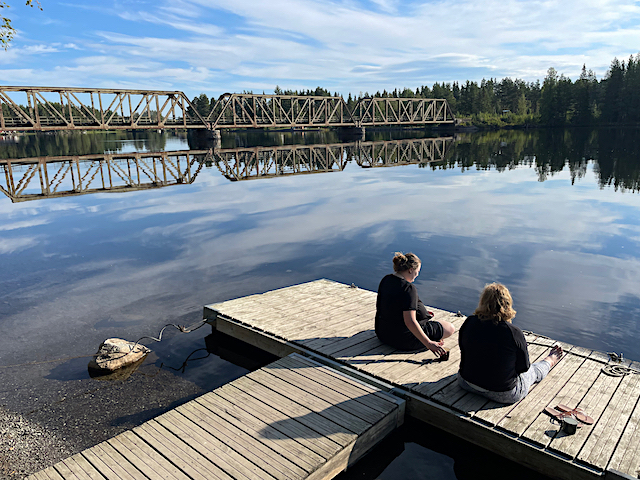






It was with a deepened sorrow that I drove north on day 3. I just received the news of the passing of Prof Johannes Hatting, a friend of mine from the ‘Kampvuur’ chat group, to which I belong. Johan was a professor in travel and he specialised in the Boer War history, mostly in and around Bloemfontein. The last message Johan posted in Kampvuur read ‘Ek stry hom al di (sic) afgelope week. Dis n fokop’ referring to his battle with Covid19. Johan passed away on 4 August, and is missed.
Planning trips generally are easy. You determine where you want to go, enter that into Google Maps or your Garmin and divide that reported distance by 100 to give you estimated driving time. Ouma Koekoe will differ with my calculation though, as I tend to wander even when driving, and she’ll instinctively know that my 8 hours will turn out to be 10 or more hours. However, Sweden and Norway taught me a valuable new reality. Even if it’s tarred and national roads, not all roads are equal. If you manage an average of 70km/h you can count yourself lucky. So my 3163km from home to Base Camp in Skarsvåg reported by Google to be 36 hours of driving does not equal my planned 4 days. It turned out to be day seven when we arrived at Skarsvåg which would be our Base Camp for the next three days. I should be fair to the roads however and confess that the slow drive has a lot to do with the immaculate scenery, a hotdog or two or six, the euphoria of the entire trip, the constant stop for photos at spots such as entering the arctic circle, the first sight of a real fjord, reindeer, to celebrate the Springboks’ series win over the British and Irish Lions on the shores of the Barents Sea in Altaelva plus the constant search for moose, bears and even wolves. We all realised that the chances of seeing bears or wolves from the seat of your vehicle on a public road were very slim, but I really expected to see a few moose. The proof was clearly visible that they are there by the number of spotlights on all the local vehicles, even the sedans.
So far, we had 6 nights in LenieBus, with just the one night in a caravan park. The others were all wild camping, of which three were exquisite nature spots next to lakes or in woods. One was next to the road because I decided before the time, as a matter of trip principle, that I do not want to drive after sunset. Though LenieBus have seats for four adults, the extra two passengers, my adult children, had to pitch a tent every night. For them it probably was a bit of a schlep, but for Heleen and me, sitting on a camp chair with a beer watching them pitch their tent, it was no schlep at all. Camping was now really easy. As Johan Bakkes wrote in a review in a South African magazine, camping with a campervan remind you of a tortoise, ‘you’ve got your house on your back’. You just pick a spot, push a button to let the little step shift out, so that you don’t pull a hamstring when you reach for the fridge, and open two camping chairs and two beers. The children will bring their chairs when their tent is pitched.
Day 1 at Base Camp camping site in Skarsvåg was supposed to be to do laundry and freshen up, but we had such a good camping spot and such good weather, that we sort of just sat around, enjoyed a lazy brunch, some short distance cycling and obviously threw some meat on the grill for a leisurely braai, while even having a swim in the arctic water of the Storvatnet lake on our doorstep. Day 2 was a little more serious, but this was why I brought the four bikes along. From Base Camp, it’s a further 16km to the actual Nordkapp, and this I wanted to do by bike – a nice leisurely 32km roundtrip with a total elevation gain of 721m. Nordkapp is situated at N71°21’10” and is the most northern point of Europe; thus for me it was a real bucket-list tick-off objective. To put this location into South African context; if I would go to 71°21’10” South, I would actually be on ‘dry ground’ in Antarctica, roughly 4070km south af Cape Agulhas! That’s a cool travel thought for me. (Africa’s most southern point at Cape Agulhas is at 34°49’59,6”).
“To move, to breathe, to fly, to float, to gain all while you give, to roam the roads of lands remote, to travel is to live.” (Hans Christian Andersen)

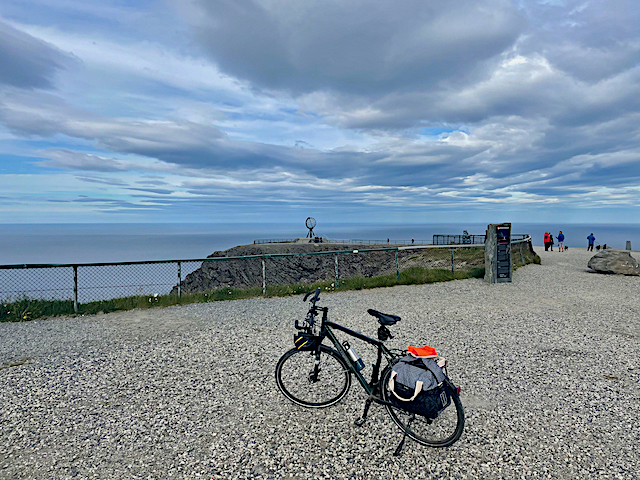




Turning south from Nordkapp I did some brief estimates and realised we had two weeks to get back home in Germany, but there were many things I wanted to see, places to stop at and photos to take. We could fortunately build in a few detours and there’s enough time to head south-west through most of Norway and visit places such as Lofoten, Bergen, the Trollstigen and the Preikestolen, to name just a few, … and which we did. Norway must be one of the most beautiful countries in the world. The scenic splendour is endless, the 1700 named fjords range from the massively large Sognefjord which stretches 204km inland to the narrowest Nærøyfjord which spans a mere 500m in width at some places. The European Road E39 is the main road leading south, but it is by no means a highway. Traveling at averages of about 60km per hour is common, and you should not be in a hurry when you decide to road-trip in Norway. Heading south we leisurely meandered and attempted wild camping as often as possible. It’s hard to highlight the best overnight stops but worth specific mention are the nights
- next to Fjord Kjaeken, facing west and just enjoying the sunset at about 23:00, while a bottle of Roodeberg, two otters and some dolphins add to the tranquility, plus here I found some dirt road,
- the night at Vevang on the Atlanterhavsveien or Atlantic Ocean Road with those magnificent sea crossing bridges,
- the night next to a remote road on the banks of Dam Sunnfjord and swimming in the icy waters for the brave amongst them (or stupid?),
- and the camping in basic campsites such as
- Solnaset Gard (farm), and
- The Preikestolen campsite where the owner who frequently travels to South Africa and the Kruger National Park, actually installed braais similar to those well-known ones the South African Parksboard have in all their camps.
Lofoten is an archipelago located at the northwest of Norway, where the dramatic mountain- and sea views are never ending, and where the entire peninsula is lined with picturesque fishing villages. Probably the most famous and definitely worth the visit is the town Henningsvær, with its soccerfield virtually build in the sea on a small peninsula. A fascinating learning experience, and excellent thick vegetable and reindeer soup, is available at the Lofotr Viking musem, with its restored longhouse and Viking boats. This house belonged to the powerful Chieftain of Borg and dates from the years 700 AD. I am not sure what Borg’s relationship was with Ragnar Lothbrok and his sons was, but Borg himself had quite a dwelling of note.






When traveling in Norway, you are going to use ferries and toll-roads, and its completely justified when you consider the infrastructure of these tunnels and ferries and time saved by using them. With some routes it simply is not wortwhile to search for alternative routes, and though some bloggers and travel writers criticise the cost, in the end I didn’t think it was overly pricey. On most of the toll-roads and ferries, you simply use them, and get billed later. Photos are taken of your car registration, and the bill is then posted or emailed to you. Its wise to preregister on the website of the Toll Collection company Epass24 and just let the transactions get paid automatically from your preregistered credit card, at a discounted tariff because you’ve registered. Below is a summary of my toll and ferry costs.
One or two toll gates were paid in cash though, including a real expensive €125 for the road crossing between Denmark and Sweden, as well as the ferry crossing between Norway and Denmark (Kristiansand to Hirtshals).
Part of travel experience is obviously to enjoy local cuisine and learn a little about the tastes, flavours and sources of sauces of the country. Since we were on a self-catering self-drive adventure, I can confirm that Cara makes a mean spaghetti bolognaise, Heleen all kinds of traditional ‘padkos’, Stean a mean ‘braaibroodjie’ and I can still ‘braai’. We did now-and-then eat out and in Norway you have plenty of excellent fish, reindeer meatballs with sauce (called kjøttkaker) and potato dumplings (called raspeball), stew (called lapskaus), and lingonberry cream (called trollkrem) for dessert as local dishes. However, by far the biggest traditional dish, from our personal experience are hotdogs. To Norwegians ‘hotdog’, is like ‘braai’ to South Africans; the go-to solution to everything. Hotdog is not really a verb, but in Norway it is. We hotdogged a lot. It’s not a massive exotic hotdog at all. As a matter of fact, its smallish, with the bun way too small for the sausage, but its tasty, with a choice of sauces and I think the big selling point is the bun is soft, not one of those palate breaking baguettes that frequents most of Europe’s bakeries. Don’t get me wrong, there is nothing wrong with a fresh baguette, but if you have them too frequently, you kind of end up looking like Dracula with the blood from your cut palate streaming from your mouth; and it hurts! These Norwegian hotdog buns are like freshly washed thick towels emerging from the tumble dryer, compared to wind dried towels washed with Sunlight soap in a river. To elaborate more on this, should rather be left to the professionals, and thus I refer you, to https://www.scandikitchen.co.uk/hotdog-scandinavian-way/ though I can affirm for the Norwegian hotdog as being the go-to snack, every time you stop for fuel, coffee, groceries, or, … er, well, when you stop. Its dirt cheap, delicious, and available everywhere.


Atlanterhavsveien or The Atlantic Ocean route is a roughly 9km road between the towns Kårvåg and Vevang. The road runs across an archipelago of partially inhabited islands and skerries and consists of eight bridges, four resting places and plenty of dramatic scenery. We traversed the road on a beautiful summer’s day with a calm sea and absolute exquisite scenes of natural beauty around us. We stopped, probably had a hotdog, and drove parts of the route more than once just to provide the opportunity to take it all in, and to let the drone do it’s thing.
When you think of the tourist attractions of a nature paradise such as Norway, there obviously are a few that form the basis of your trip planning. Nordkapp, a couple of fjords, Atlanterhavsveien, Trollstigen and the Preikestolen were sort of my reference via points to plan my route on. It doesn’t mean that’s it, as everything in-between is just pure splendour (remember that I’m talking 8327km here). However, you should at least plan for these four, and the fortunate thing is that you will see a couple of fjords in the process.
After a stunning drive from Lofoten, which included the Atlanterhavnveien, we found a secluded wildcamp site next to a small road and sat down to reminisce about everything we have seen, and still are experiencing.
“I have found out that there ain’t no surer way to find out whether you like the people or hate them than to travel with them.” (Mark Twain)
I love them.
Time was starting to become an issue, traveling was slow, and the road home still far. But I had two more sights to see, and I was adamant.
The Trollstigen is a famous serpentine mountain road and major tourist attraction due to its steep incline of 10% and eleven hairpin bends up a steep mountainside. It is the ascent (or descent) at the end of the beautiful Isterdalen (valley) which, while driving the pass, provides excellent views of the valley as well as the Stigfossen waterfall. Trollstigen means the troll path or troll trail. I’m not sure what Norway’s big thing with trolls are?



At the foot of the trail to the Preikestolen (Pulpit rock) is the Preikestolen camping ground. We arrived in the afternoon, and were slightly under time pressure, since we wanted to visit the actual pulpit rock that same day, so that we could travel home the next day. We (I mean the children) pitched their tent, and we put on our walking shoes. I consulted Google Maps and planning fell into place – 57min walk, Google said, 3.9km Google said, and ‘mostly flat’ Google said. Google lied! However, after a 9.6km roundtrip (4.8km one way) and a climb of 605m and a 3:06:05 moving time (3:52:57 elapsed time), I opened a beer very very satisfied back at the campsite. We were tired, but happy. The scenery is out of this world, the last tick-box of our Norway trip was ticked off and we sat around a campfire build on a Kruger National Park lookalike ‘braaier’. The owner of the campsite is a fond traveller to South Africa, and he particularly loves the Kruger National Park. So much so, that he installed similar braaiers in he’s Norway camping ground.
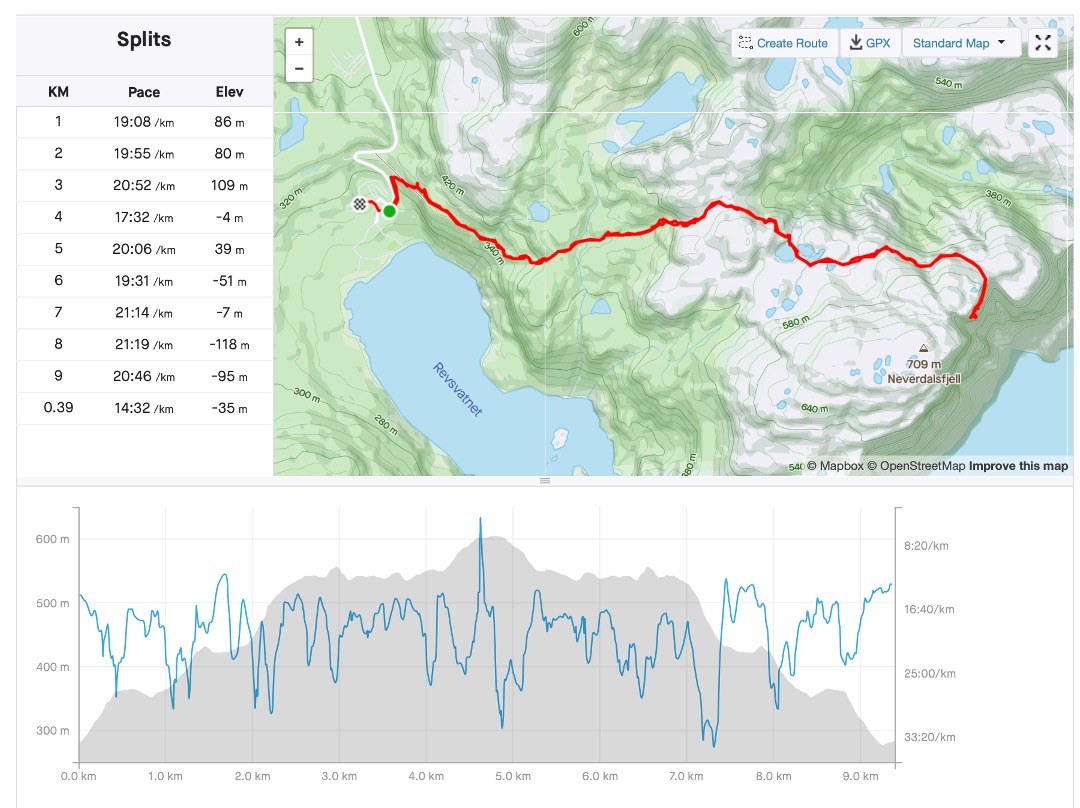


I was happy and I felt extremely blessed. Except for two more days of driving, this was the end of an absolute epic and wonderful family holiday.
Now, as I write this trip report in my warm lounge at home on this freezing December morning, I cannot wait to turn LenieBus’s nose in some new direction and get going again. I must remember to order a case Springfield The work of Time.


